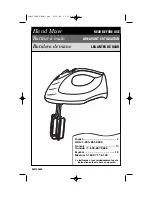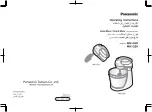
A 60V moving iron meter is permanently connected across the 50V a.c.
output. This has a mark at 50V and a black band extending from 48.5V to 53.3V.
An hours meter is permanently connected across the output of the a.c.
stabiliser to indicate the total use of the unit.
11.
CIRCUIT DESIGN – GENERAL PRINCIPLES
In order to minimise temperature rise and weight the power consumption has
been kept to a minimum. Thus the current in each stage has a value no higher than
that which allows for the maximum current swing to be expected under the accepted
margin of overload.
Since tape machines all have reasonably high input impedance’s the output
amplifier has been designed to work into a load of 2k
Ω
minimum. This allows for
each output to feed two tape machines, each with an input impedance as low as
4k
Ω
.
The other outputs including echo, cue, loudspeaker, intercom, and alternative
talkback have been made identical with the main channel outputs. Small power
amplifiers are provided in the Main Power Unit for use on the cue, intercom, and
alternative talkback outputs if desired.
To have made each line output suitable for feeding a 200
Ω
load would have
involved increasing the power dissipation of the output stage by a factor of 10. In
rare cases where it may be required to drive a device with an input impedance of
less than 2k
Ω
, it is much more economical to provide a suitable amplifier than to
increase the power to all the Mixer output amplifiers.
All amplifiers incorporate a considerable amount of negative feedback so
distortion remains very low almost as far as the clipping point and then increases
very rapidly. Most bus lines are of the virtual earth type. This means that they are
fed from high impedance current sources (Amplifiers Type B) and are terminated by
very low input impedance, virtual earth amplifiers (Type C). This method of mixing
requires far less power (and therefore bulk and weight) and produces a better signal
to noise ratio than conventional resistive mixing. It is also more flexible because an
almost unlimited number of current sources may be connected without altering the
transmission via existing circuits. Cross talk between bus lines is very small, even
though they are not screened, because the signal voltages upon them are minute.
This reduces considerably the built and cost of the cable form.
The signal level chosen within the Mixer is –10dBV. This is the highest level
which, with a 20dB overload margin, can be handled simply and conveniently,
without transformers, by transistors fed with
±
20V supplies.
In order to obtain a good signal to noise ratio the microphone input level is raised
in the first amplifier (Type D) which has a very good noise figure and subsequently
is not allowed normally to fall below –15dBV (except in the CRM and SP cassettes)
by using active tone controls. This technique produces an overall signal to noise
















































